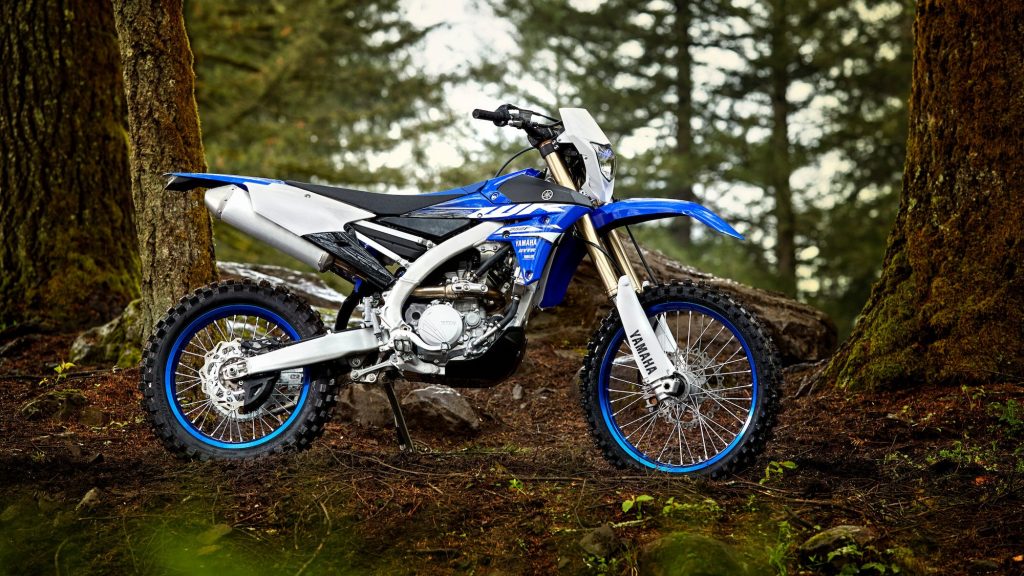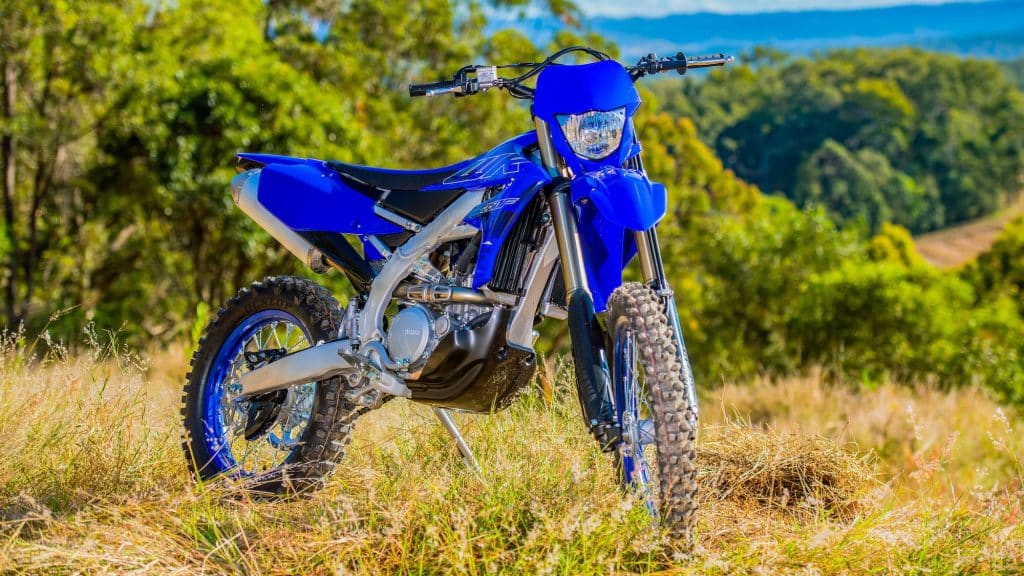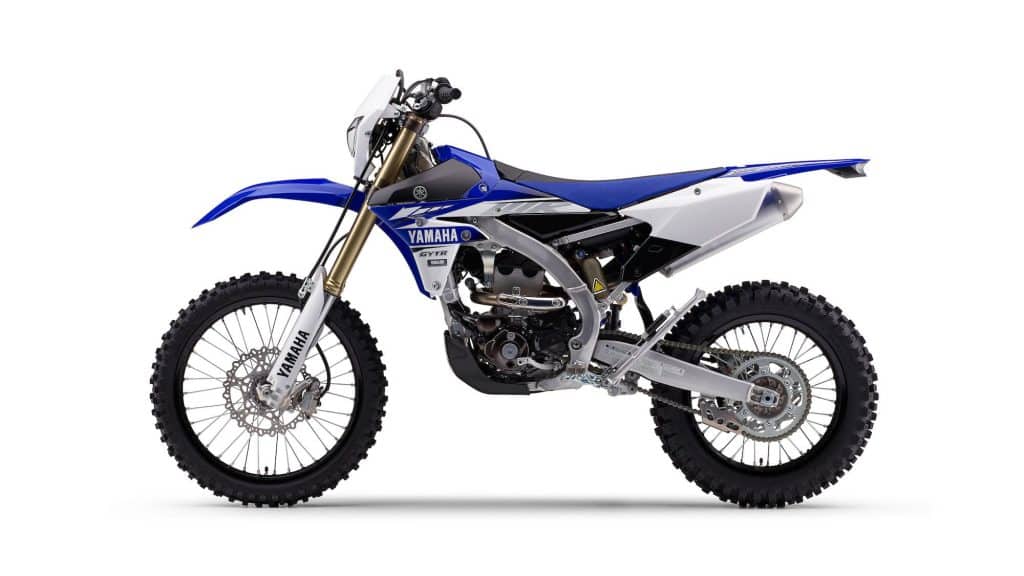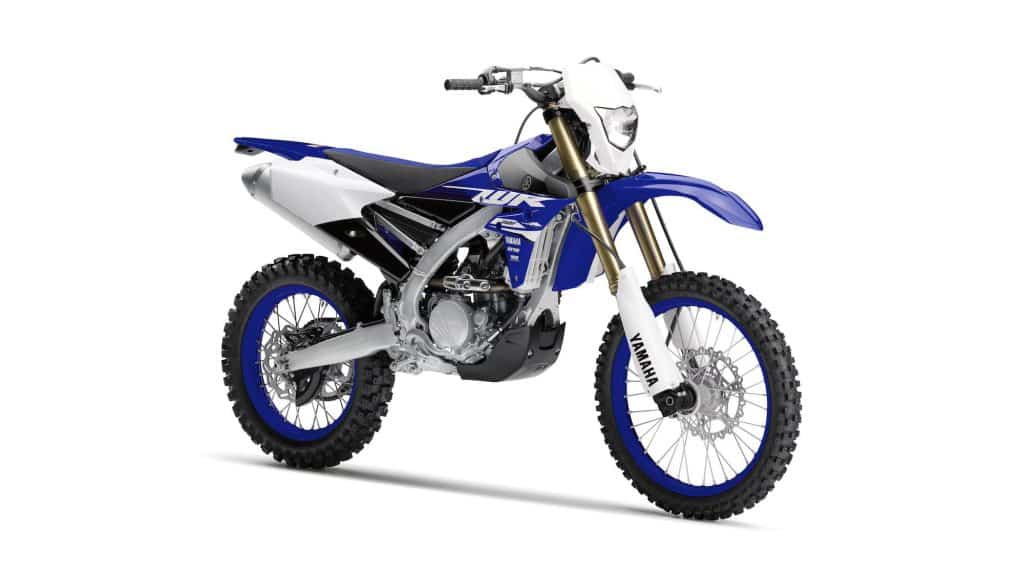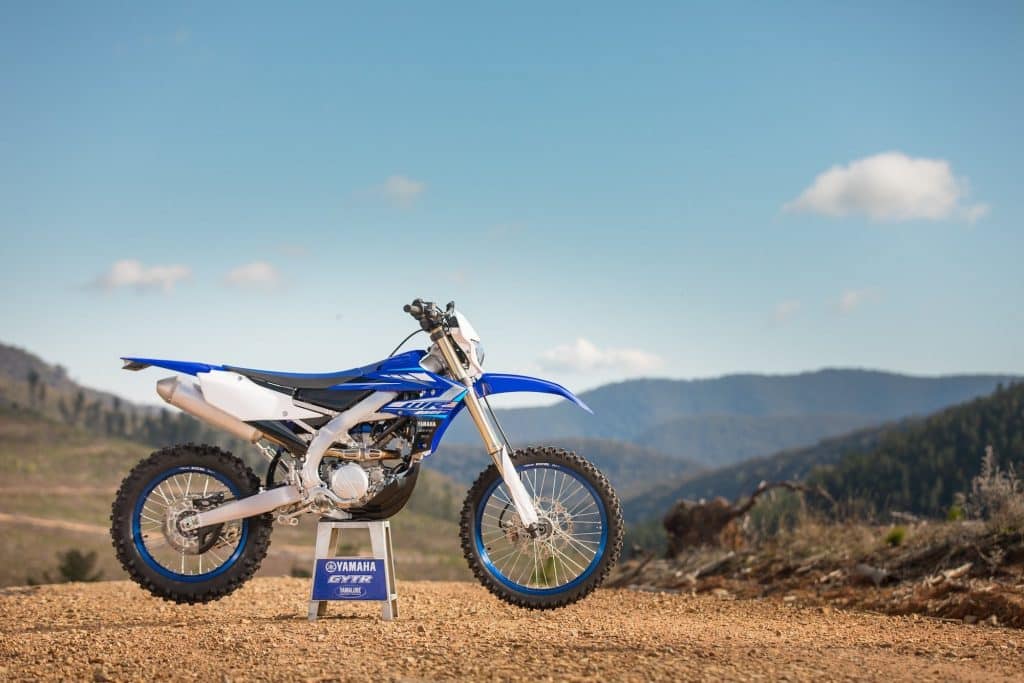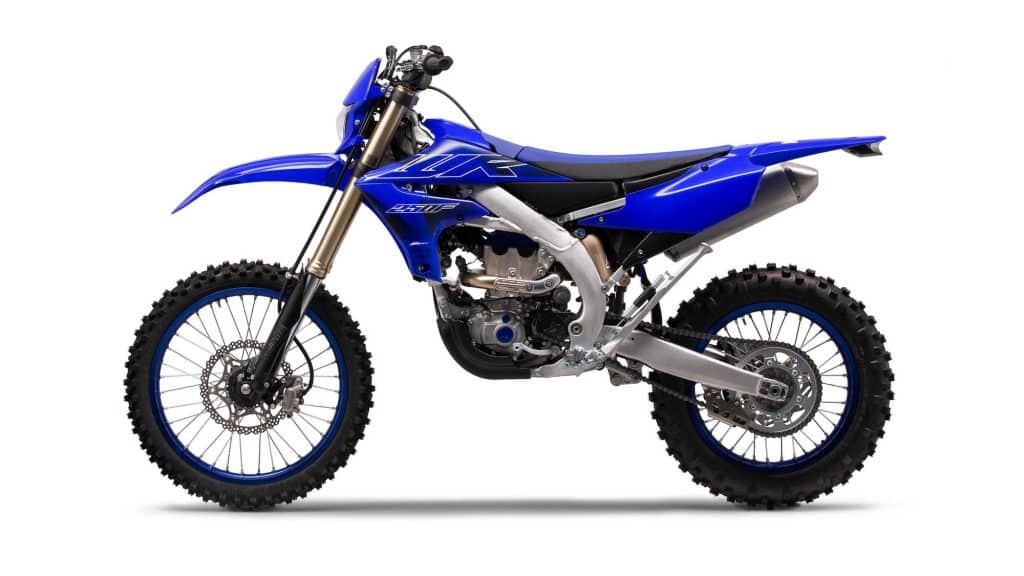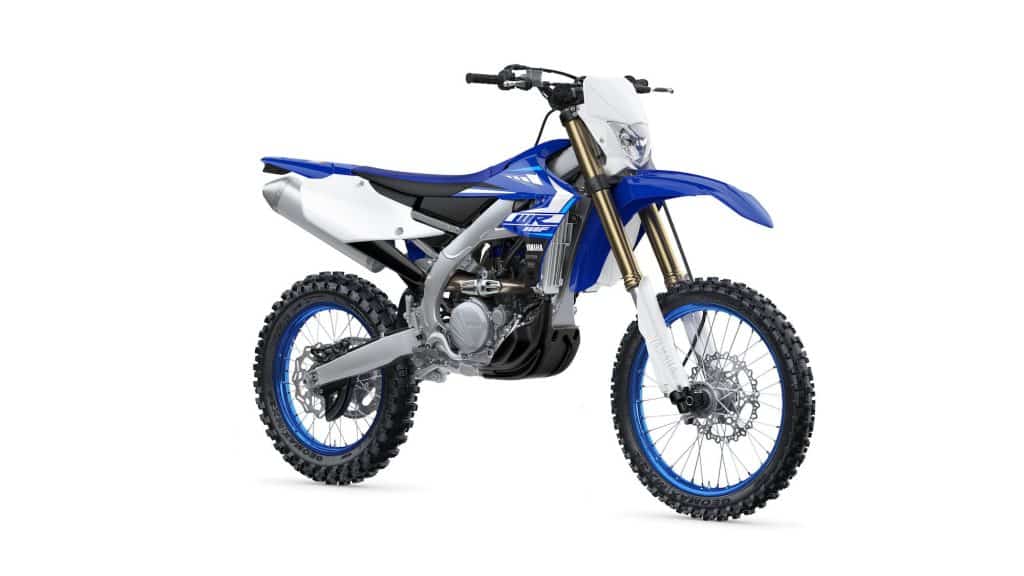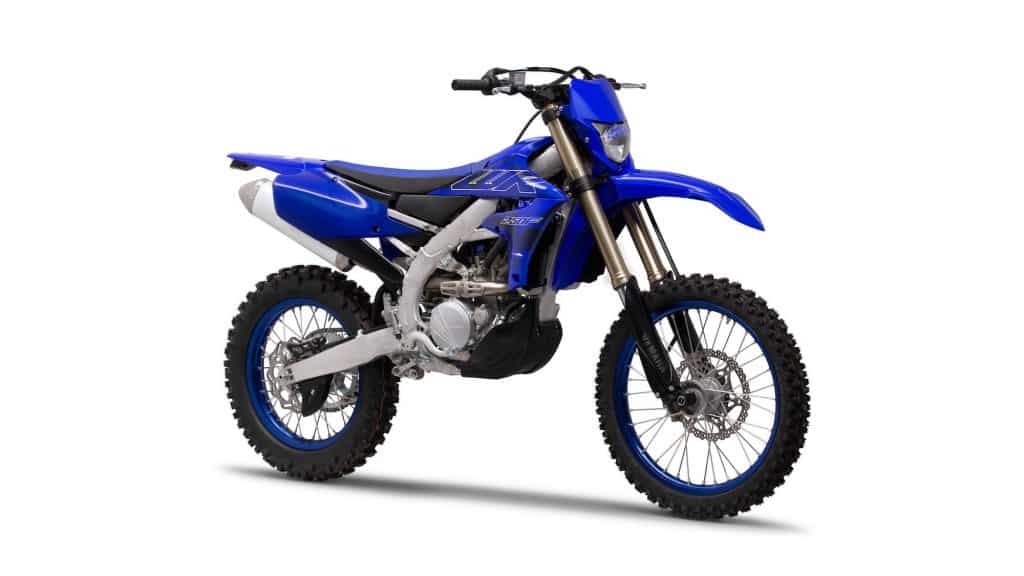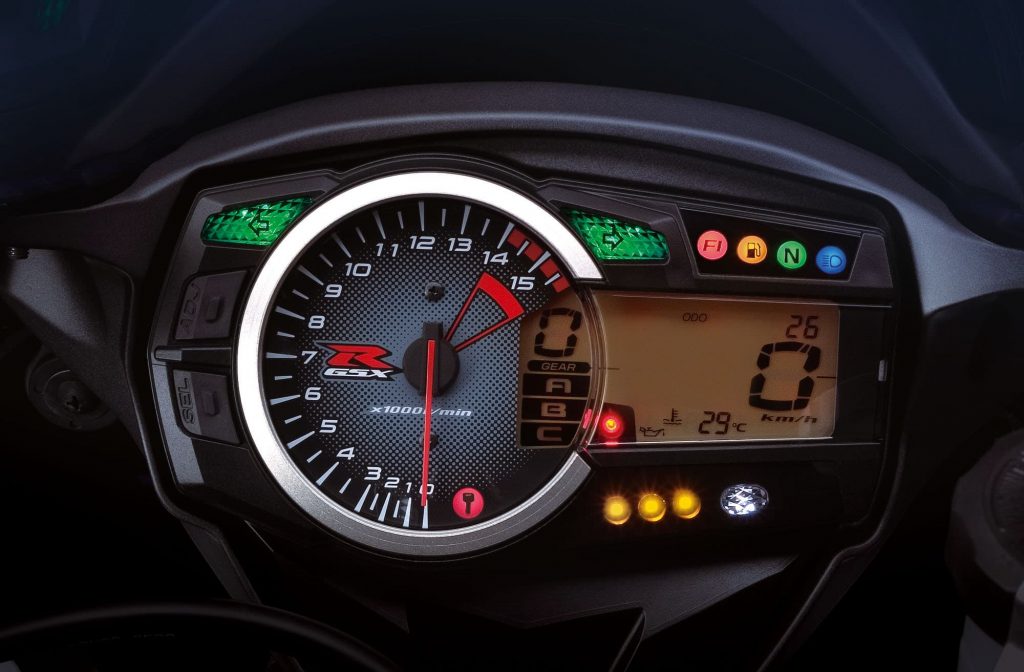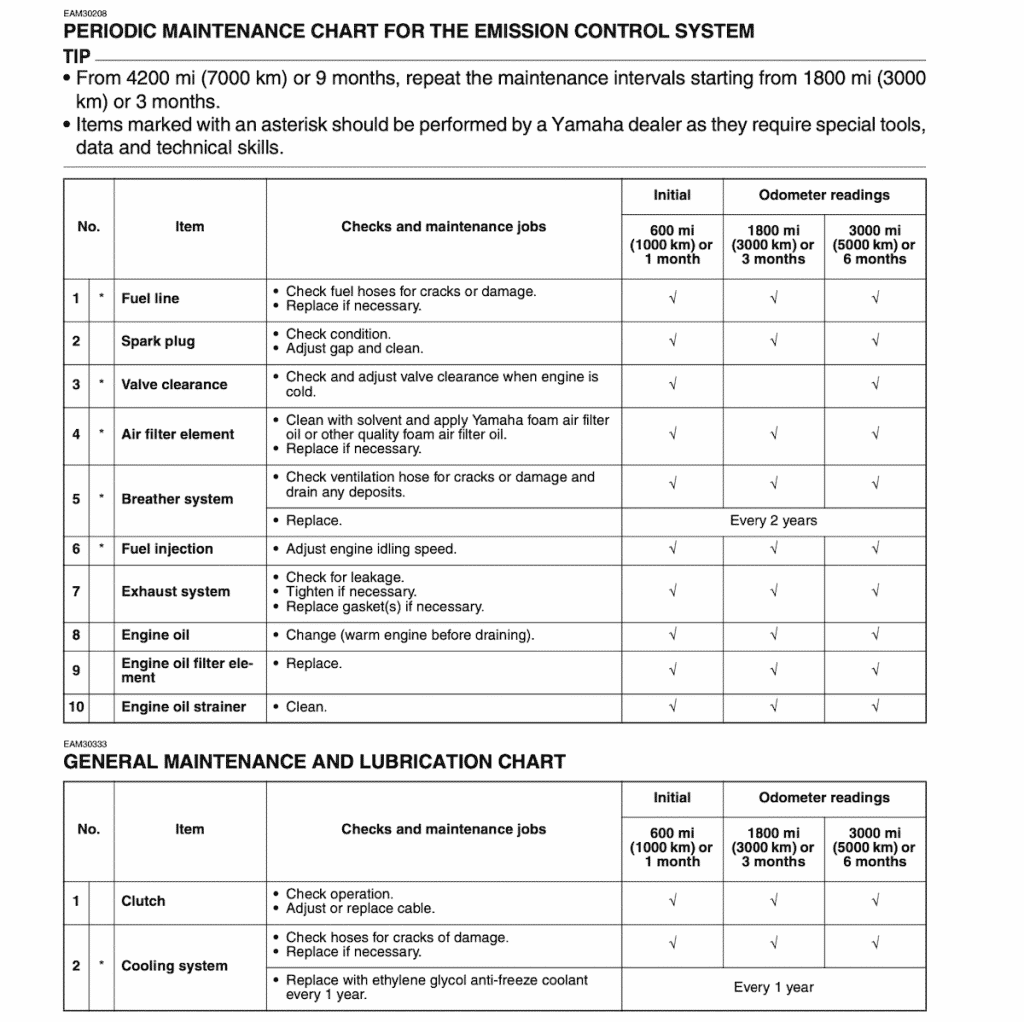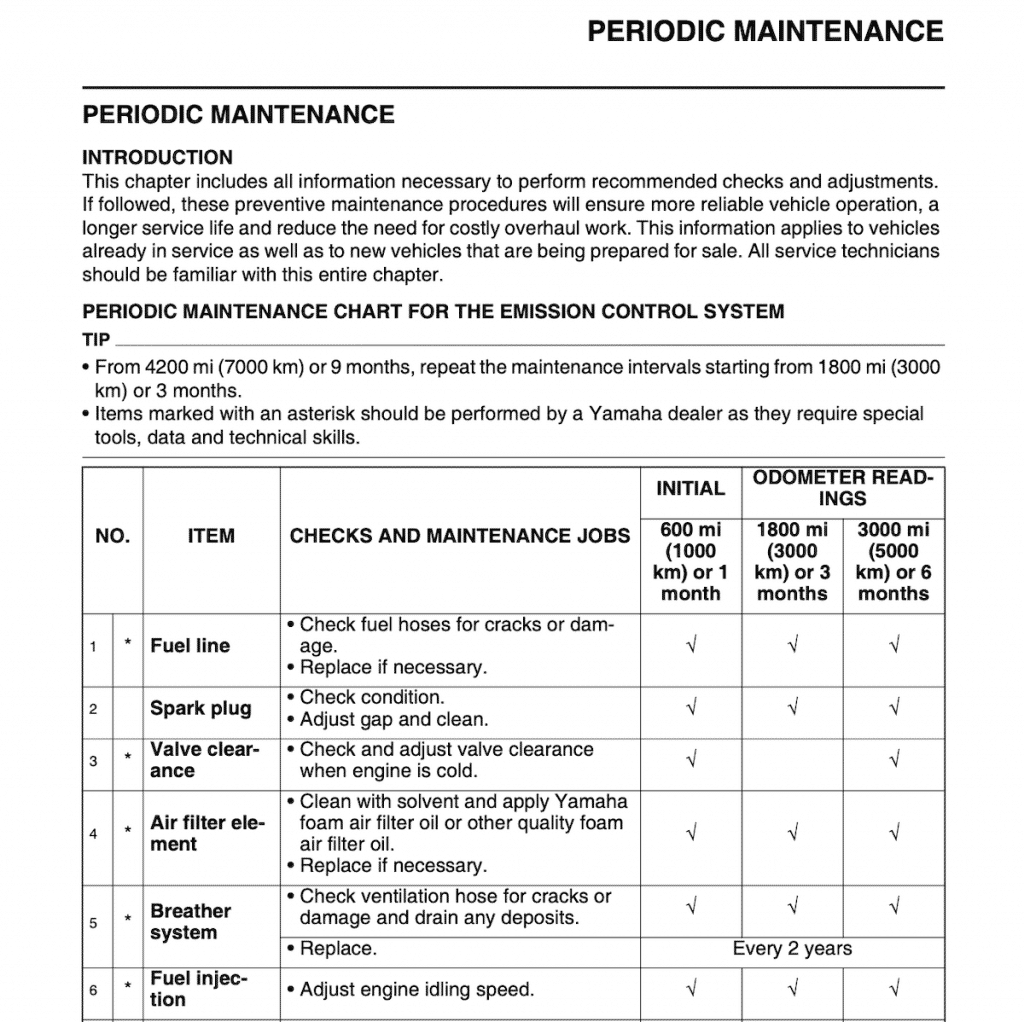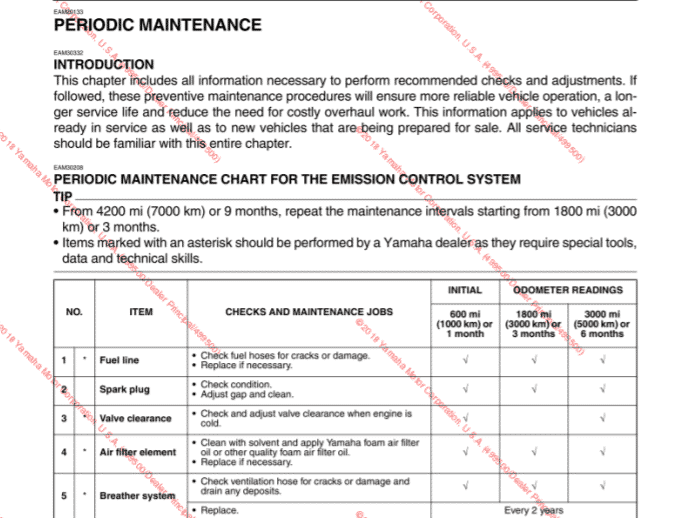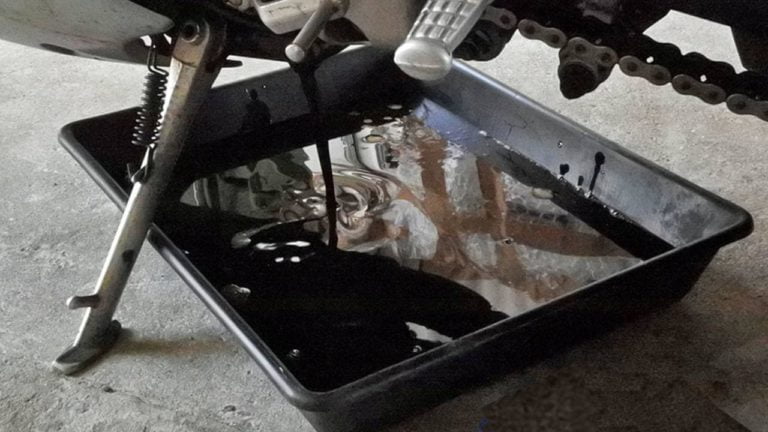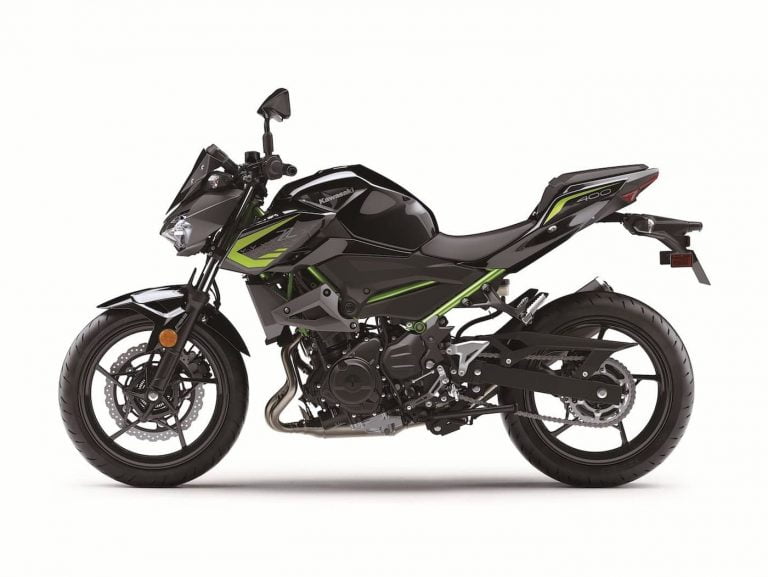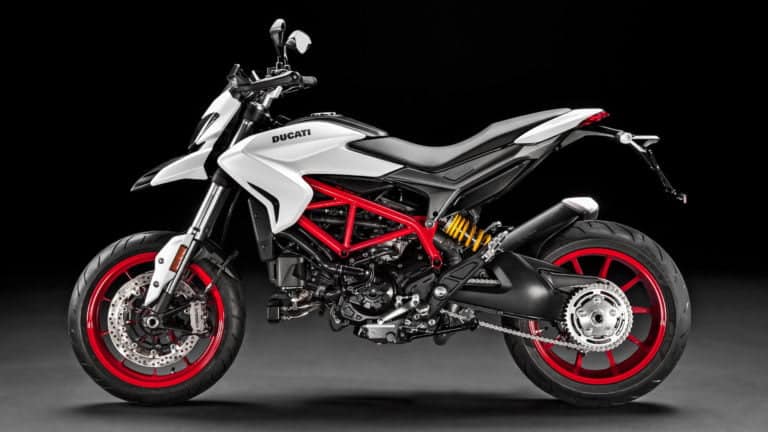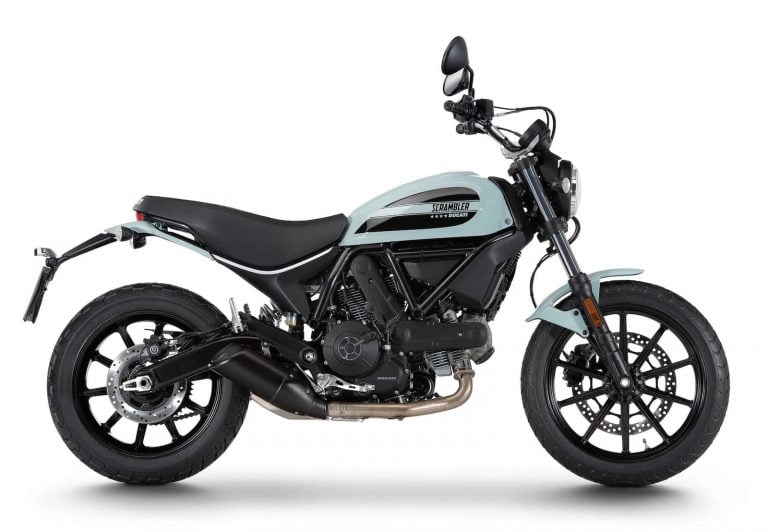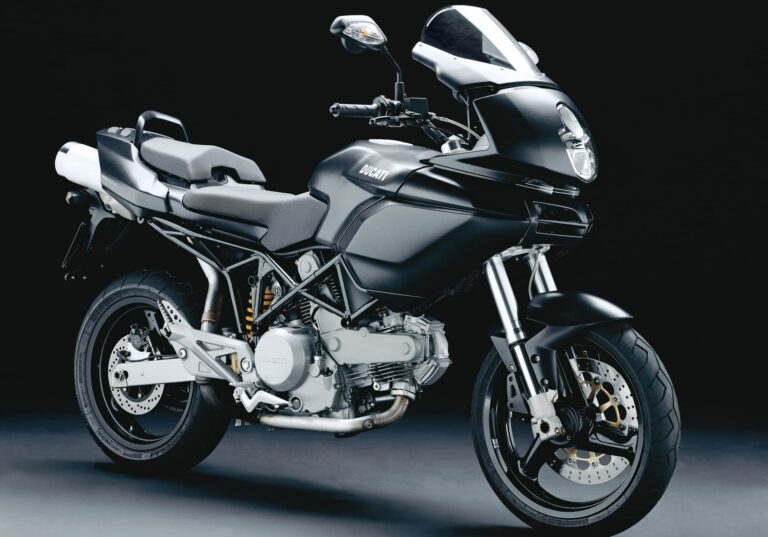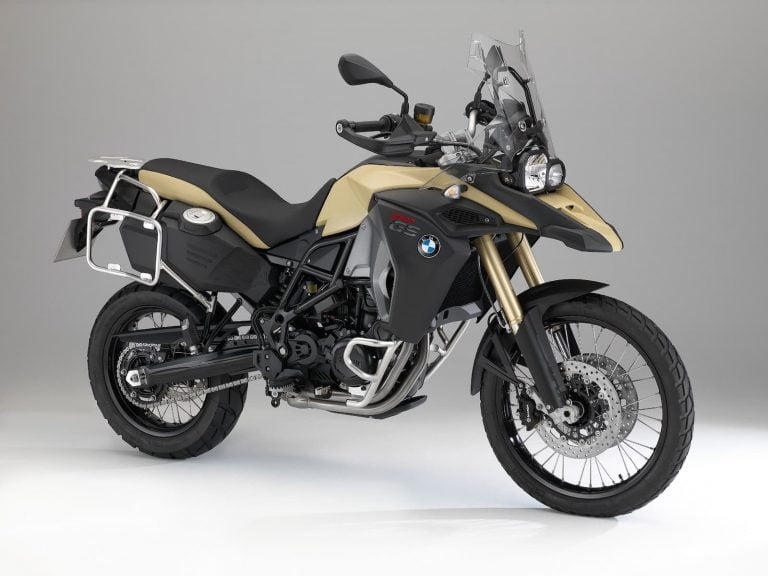Yamaha WR250F (2015+, fuel injected) Maintenance Schedule and Service Intervals
This is the maintenance schedule and associated service intervals for the Yamaha WR250F.
The WR250F is an off-road motorcycle, sitting in between the street-legal but more docile dual sport WR250R, and the more extreme race-oriented YZ250.
Built since 2001, the WR250F has gone through a few evolutionary changes along the way, but a lot of the maintenance requirements are roughly the same. The most important recent turning point was adding fuel injection in 2015, so this maintenance schedule is for the 2015+ WR250F with fuel injection.
In 2018, the Yamaha WR250F was overhauled (more power!) and the 2020 Yamaha WR250F was overhauled yet again. But the changes weren’t significant enough to affect the maintenance requirements.
The latest WR250F’s maintenance schedule has a lot in common with its bigger sibling, the Yamaha WR450F.
This site has links for things like oil and spark plugs from which we earn a commission (which unfortunately nobody can save, not even us). If you appreciate this work, then please use those links. Thanks!
What you need to service the Yamaha WR250F
Below are the consumables you need to service the Yamaha WR250F.
| Item | Yamaha WR250F spec |
|---|---|
| Oil | Yamalube 10W-40 or Yamalube 10W-50 per the manual (and it’s affordable). Don’t over-torque the bolt (spec is 43 Nm/32 lb-ft for the oil drain bolt per the manual) — use a torque wrench if you don’t have experience with how much torque is enough. |
| Oil filter | Oil filter is part # 5D3-13440-09-00. You can usually buy it cheaply in packs of 3-4. The K&N part equivalent is KN-140. |
| Chain lubricant | The chain needs to be lubricated every 800 km/500 miles (or more, if it gets wet/dirty). Motul chain paste is cheap and well-loved. |
| Cable lubricant | Remember to lubricate your clutch cable (and brake cables if you have them) with a cable lubricant. Protect All Cable Life is a good general-purpose lubricant. |
| Brake fluid | Spec is to use DOT-4 brake fluid, e.g. Castrol DOT 4. |
| Coolant | Use 1.03L (about 1.1 US qt) of ethylene glycol pre-mix coolant with a 50-50 mixture. |
| Front brake pads | Genuine part number for front brake pads is B29-25805-00. See the WR250F brake pad set. |
| Rear brake pads | Genuine part number for rear brake pads is 1C3-W0046-B0. See the WR250F brake pad set. |
| Spark plugs | NGK LMAR8G (you just need one!), with a spark plug gap of 0.7-0.8mm (use a spark plug gapping tool), torqued to 13 Nm or 9.4 ft-lb (use a torque wrench) |
| Air filter | Genuine part number is 1SL-14451-00. You can also use the K&N equivalent YA-4514XD (2015+) or YA-4503 (pre-2014). |
| Lithium grease | Use a lithium soap based grease for all the important greasing points. |
Yamaha WR250F (fuel injected) Maintenance Schedule (Normal use)
Below is the maintenance schedule for the Yamaha WR250F. It is reformatted from the manual.
At the end of the maintenance schedule, continue it in the pattern shown. Do every item every 1.8K miles (3K km), other than the valve clearance, which you check every two services.
See further below for the competition/race maintenance schedule.
| mi x 1000 | 0.6 | 1.8 | 3 | |
|---|---|---|---|---|
| km x 1000 | 1 | 3 | 5 | |
| Months | 1 | 3 | 6 | Every |
| Change engine oil (while warm) with Yamalube 10W-40 | ✓ | ✓ | ✓ | |
| Replace oil filter (K&N part YA-4514XD) | ✓ | ✓ | ✓ | |
| Clean oil strainer | ✓ | ✓ | ✓ | |
| Check condition of spark plugs, adjust gap and clean. Replace if necessary with NGK LMAR8G. | ✓ | ✓ | ✓ | |
| Check and adjust valve clearance when engine is cold | ✓ | ✓ | ||
| Clean air filter with solvent (not with compressed air) and apply foam air-filter oil equivalent oil. Replace if necessary (YA-4514XD) | ✓ | ✓ | ✓ | Clean/replace more often if riding in dust/wet. |
| Check fuel hoses for cracks or damage. Replace if necessary. | ✓ | ✓ | ✓ | |
| Check crankcase ventilation hose for cracks or damage and drain any deposits | ✓ | ✓ | ✓ | |
| Replace crankcase breather | 2 years | |||
| Adjust engine idling speed | ✓ | ✓ | ✓ | |
| Check exhaust for leakage. Tighten and/or replace gaskets as necessary. | ✓ | ✓ | ✓ | |
| Check clutch operation. Adjust or replace cable. | ✓ | ✓ | ✓ | |
| Check cooling system hoses for cracks of damage. Replace if necessary | ✓ | ✓ | ✓ | |
| Replace coolant with ethylene glycol coolant (ethylene glycol pre-mix) | Year | |||
| Clean spark arrester (if fitted) | ✓ | |||
| Check front brake operation, fluid level, and for fluid leakage. Replace brake pads if necessary | ✓ | ✓ | ✓ | |
| Check rear brake operation, fluid level, and for fluid leakage. Replace brake pads if necessary | ✓ | ✓ | ✓ | |
| Change brake fluid (front and rear) with Castrol DOT 4 and internal components of the brake master cylinders and calipers | Year | |||
| Check brake hoses for cracks or damage. Replace if necessary. | ✓ | ✓ | ||
| Replace brake hoses | 4 years | |||
| Check wheel runout, spoke tightness and for damage. Tighten spokes if necessary | ✓ | ✓ | ✓ | |
| Check tire tread depth and for damage. Replace if necessary. | ✓ | ✓ | ✓ | |
| Check wheel bearings for smooth operation. Replace if necessary. | ✓ | ✓ | ✓ | |
| Check swingarm pivot bearing assemblies for looseness. Moderately repack with lithium soap-based grease | ✓ | ✓ | ✓ | |
| Check chain slack/alignment and condition. Adjust and lubricate chain (Motul chain paste) | Every ride | |||
| Check steering bearing assemblies for looseness. Moderately repack with lithium soap-based grease. | ✓ | ✓ | ✓ | 1200 mi (2000 km) / 12 months |
| Lubricate brake and clutch lever pivot shafts, and brake pedal pivot shaft with lithium soap-based grease lightly. | ✓ | ✓ | ✓ | |
| Check sidestand operation. Lubricate with lithium soap-based grease. | ✓ | ✓ | ✓ | |
| Check front fork operation and for oil leakage. Rebuild / replace if necessary. | ✓ | ✓ | ||
| Check shock absorber operation and for oil leakage. Replace if necessary. | ✓ | ✓ | ||
| Lubricate rear suspension link pivots with molybdenum disulfide grease lightly | ✓ | ✓ | ||
| Lubricate control cables thoroughly (Protect All cable life) | ✓ | ✓ | ✓ | |
| Check throttle operation and free play. Adjust the throttle cable free play if necessary. Lubricate the throttle grip housing and cable (Protect All Cable Life) | ✓ | ✓ | ✓ | |
| Check chassis fitting and fasteners. Correct if necessary | ✓ | ✓ | ✓ | |
| Check battery terminals for looseness and corrosion | ✓ | ✓ |
Yamaha WR250F Competition Maintenance Schedule
The Yamaha WR250F’s maintenance schedule for competition use is much more intense.
| Item | Break-in | Every race | Every 3rd race / 500 km | Every 5th race/ 1K km | As needed | Every |
|---|---|---|---|---|---|---|
| Engine oil — replace | ✓ | ✓ | ||||
| Valve clearances — Check, adjust as necessary | ✓ | ✓ | ||||
| Valve seats and stems — check for wear. | ✓ | |||||
| Valve seats and stems — Replace. | ✓ | |||||
| Valve springs — Check free length. | ✓ | |||||
| Valve springs — Replace. | ✓ | |||||
| Valve lifters — Check for scratches and wear. | ✓ | |||||
| Valve lifters — Replace | ✓ | |||||
| Camshaft — Inspect the camshaft surface. Inspect the decompression system. | ✓ | |||||
| Camshaft — replace. | ✓ | |||||
| Camshaft sprocket — Check for wear on the teeth and for damage. | ✓ | |||||
| Camshaft sprocket — Replace. | ✓ | |||||
| Piston — Inspect crack. Inspect carbon deposits and eliminate them. | ✓ | ✓ | ||||
| Piston — Clean. | ✓ | |||||
| Piston — Replace (with Piston ring) | ✓ | |||||
| Piston ring — Check the ring end gap. | ✓ | |||||
| Piston ring — Replace (with Piston) | ✓ | ✓ | ||||
| Piston pin — Inspect. | ✓ | |||||
| Piston pin — Replace. | ✓ | |||||
| Cylinder head — Inspect carbon deposits and eliminate them. Change gasket. | ✓ | |||||
| Cylinder — Inspect score marks. Inspect wear. | ✓ | |||||
| Cylinder — Replace. | ✓ | |||||
| Clutch — Inspect housing, friction plate, clutch plate and spring. | ✓ | ✓ | ||||
| Clutch — Replace. | ✓ | |||||
| Transmission — Inspect. | ✓ | |||||
| Transmission — Replace bearings. | ✓ | |||||
| Shift fork, shift cam, guide bar — Inspect wear. | ✓ | |||||
| Generator rotor nut — Retighten. | ✓ | ✓ | ||||
| Muffler — Inspect and retighten. | ✓ | ✓ | ||||
| Muffler — Clean. | ✓ | |||||
| Muffler — Replace. | ✓ | |||||
| Crank — Inspect and clean. | ✓ | ✓ | ||||
| Throttle body — Inspect. | ✓ | |||||
| Spark plug — Inspect and clean. | ✓ | ✓ | ||||
| Spark plug — Replace. | ✓ | |||||
| Drive chain — Lubricate, slack, alignment. | ✓ | ✓ | ||||
| Drive chain — Replace. | ✓ | |||||
| Cooling system — Check coolant level and leakage. | ✓ | ✓ | ||||
| Cooling system — Check radiator cap operation. | ✓ | |||||
| Cooling system — Replace coolant. | ✓ | 2 years | ||||
| Cooling system — Inspect hoses. | ✓ | |||||
| Outside nuts and bolts — Retighten. | ✓ | ✓ | ||||
| Air filter — Clean and lubricate. | ✓ | ✓ | ||||
| Air filter — Replace. | ✓ | |||||
| Oil filter — Replace. | ✓ | ✓ | ||||
| Engine guard — Replace. | ✓ | |||||
| Frame — Clean and inspect. | ✓ | ✓ | ||||
| Fuel tank, fuel pump — Clean and inspect. | ✓ | ✓ | ||||
| Fuel hose — Inspect. Replace as needed. | ✓ | |||||
| Fuel hoses — Replace. | ✓ | 4 years | ||||
| Brakes — Adjust lever position and pedal position. | ✓ | ✓ | ||||
| Brakes — Lubricate pivot point. | ✓ | ✓ | ||||
| Brakes — Check brake disc surface. | ✓ | ✓ | ||||
| Brakes — Check fluid level and leakage. | ✓ | ✓ | ||||
| Brakes — Retighten brake disc bolts, caliper bolts, master cylinder bolts and union bolts. | ✓ | ✓ | ||||
| Brakes — Replace pads. | ✓ | |||||
| Brakes — Replace brake fluid. | ✓ | Year | ||||
| Front forks — Inspect and adjust. | ✓ | ✓ | ||||
| Front forks — Replace oil. | ✓ | ✓ | ||||
| Front forks — Replace oil seal. | ✓ | |||||
| Front fork oil seal and dust seal — Clean and lubricate. | ✓ | ✓ | ||||
| Protector guide — Replace. | ✓ | |||||
| Rear shock absorber — Inspect and adjust. | ✓ | ✓ | ||||
| Rear shock absorber — Lubricate. | ✓ | ✓ | Rain ride | |||
| Rear shock absorber — Retighten. | ✓ | ✓ | ||||
| Drive chain guard and roller — Inspect. | ✓ | ✓ | ||||
| Drive chain stopper — Inspect. | ✓ | |||||
| Swingarm — Inspect, lube and retighten. | ✓ | ✓ | ||||
| Relay arm, connecting rod — Inspect, lube and retighten. | ✓ | ✓ | ||||
| Sidestand — Lubricate. | ✓ | |||||
| Steering head — Inspect free play and retighten. | ✓ | ✓ | ||||
| Steering head — Clean and lubricate. | ✓ | |||||
| Steering head — Replace bearings. | ✓ | |||||
| Tire, wheels — Inspect air pressure, wheel run-out, tire wear and spoke looseness. | ✓ | ✓ | ||||
| Tire, wheels — Retighten sprocket bolt. | ✓ | ✓ | ||||
| Tire, wheels — Inspect bearings. | ✓ | |||||
| Tire, wheels — Replace bearings. | ✓ | |||||
| Tire, wheels — Lubricate. | ✓ | |||||
| Throttle, control cable — Check routing and connection. | ✓ | ✓ | ||||
| Throttle, control cable — Lubricate. | ✓ | ✓ |
About the Yamaha WR250F

The Yamaha WR250F is an off-road trail bike that’s not purpose-built for racing.
Until 2014, the WR250F had kind of been neglected by Yamaha. Top Speed said that “for the most part, it had gradually fallen from being a hot ticket to same-old, same-old mediocrity.”
From the 2015 year, Yamaha gave the WR250F a new lease on life. They redeveloped the engine, giving it a fuel-injected 249cc DOHC engine with titanium valves to help it make power higher in the rev range.
Yamaha slanted the single cylinder engine backwards and mounted it in a bilateral beam frame to keep the centre of balance low.
Yamaha also implemented a ton of technology from the YZ250F in the WR250F. In fact, you can in theory set one up to be mostly like the other.
The main difference between the WR and the YZ is of course the gearbox; WR means “wide ratio”. The first gear is lower and the top gear is higher, for higher max speed if you want to do cannonball runs.
The WR is designed for trails, whereas the YZ is a competition bike designed for off-road racing. So the WR has things that make it more suited to many varying conditions without going flat-out the whole time: a lights, heavier flywheel, softer suspension, radiator overflow (if you overheat), an 18 inch rear wheel (the YZ has 19), and a slightly detuned motor.

In previous years the WR was differentiated for having an electric starter, but recent year models of the YZ450F have one too.
Maintaining the Yamaha WR250F is a little intense. It has 1800 mile (3000 km) maintenance intervals at which you need to change the oil/filter and check everything other than valve clearance. Then every 3000 miles / 5000 km, you check the valves. So this isn’t a bike many choose as a long-range adventurer, unless they’re willing to do that maintenance along the way.
Of course, the above aggressive maintenance schedule is if you’re using the WR250F as a mixed-use bike in dusty conditions and making the engine work. If you are using the Yamaha WR250F as an everyday commuter on paved roads, you may opt to extend those service intervals out a little.
Manual for the Yamaha WR250F
The above information was gleaned from the owner’s manual for the Yamaha WR250F for model years 2018-2020. They’re the same as previous years, and the same in Europe/US.
You can download the manual for the Yamaha WR250F from Yamaha’s website here.
